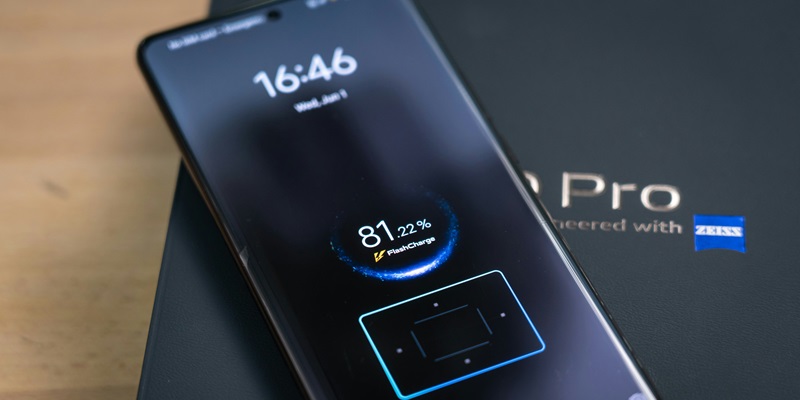The anticipation around Vivo’s forthcoming flagship smartphones is building as the company prepares to unveil its X200 series, with particular attention on the Vivo X200 Pro mini. This new compact model, designed to rival Apple’s iPhone 16 Pro, is generating significant buzz in the tech community. Following last November’s launch of the X100 series and subsequent additions like the X100s Pro and X100 Ultra, Vivo is set to introduce the X200, X200 Pro, and X200 Pro mini by the end of 2024, possibly reshaping the high-end smartphone market landscape.
New Contender in the Compact Flagship Arena
Vivo X200 Pro Mini: Key Features and Specifications
A recent post by a Vivo executive on Weibo confirmed the existence of the X200 Pro mini, indicating a strategic move by Vivo to include a more compact yet high-performing device in its portfolio. This step aligns with the company’s mission to cater to a broader range of consumer preferences by offering powerful, portable smartphones. The Vivo X200 Pro mini is expected to feature Sony’s newly launched LYT-818 primary camera, a 50 MP sensor with a 1/1.28-inch optical format. While this specification seems a step down from the IMX989’s 1-inch sensor used in the X100 Pro, the LYT-818 offers compelling advantages in other areas.
The LYT-818 sensor compensates for its smaller size with a wider dynamic range of 86 dB and a higher signal-to-noise ratio. This ensures improved image quality under various lighting conditions, making it a strong competitor in the camera technology arena. Additionally, the sensor’s 22 nm manufacturing process enhances power efficiency, a crucial factor in maintaining performance without heavily draining the battery. Vivo’s attention to balancing these technical aspects demonstrates its commitment to delivering a robust user experience while adopting innovative technologies in its compact flagship model.
Competitive Edge Over Rivals
Positioning the X200 Pro mini in direct competition with the iPhone 16 Pro, Vivo seems poised to make a significant impact on the market. The release date in China is anticipated to be October 14, alongside the launch of other X200 series models. By entering the market aggressively with compact high-end features, Vivo aims to lure potential buyers away from other industry giants. Insights from various digital sources further support the notion that Vivo is meticulously planning each feature to align with market demands and consumer expectations.
This strategic release reflects a broader industry trend wherein smartphone manufacturers are continuously pushing the envelope in camera technology while ensuring energy efficiency. As user preferences shift towards portable yet extremely capable devices, manufacturers like Vivo are adapting by shrinking the size without compromising the device’s high-end performance. The compact flagship segment is growing, and Vivo’s X200 Pro mini seems well-positioned to capture a significant share of this market, offering an alternative to those tempted by Apple’s offerings.
Vivo’s Broader Strategy and Market Dynamics
Elevating the Brand with Innovative Technology
Vivo’s upcoming X200 series signifies more than just new product releases; it underscores the company’s broader strategic aims to establish itself firmly in the premium smartphone segment. Qualcomm’s and MediaTek’s latest chips are expected to power these new models, bringing top-tier performance capabilities. Moreover, the integration of advanced camera technologies such as the LYT-818 suggests a keen focus on photography enthusiasts and those who demand superior camera functionality from their smartphones. The move to include a compact flagship model further highlights Vivo’s intent to cater to diversified market needs.
This strategy of leveraging cutting-edge camera technology while maintaining power efficiency is a calculated effort to balance performance with practicality. Consumers increasingly seek devices that perform exceptionally across various use cases—whether it be high-speed gaming, professional-grade photography, or seamless multitasking—without sacrificing battery life. Vivo’s alignment with these demands reflects a deep understanding of current market trends and user requirements, positioning the brand favorably against competitors.
Competing in the Premium Compact Segment
Excitement is mounting around Vivo’s next line of flagship smartphones as the company gears up to launch its X200 series, with the focus particularly sharp on the Vivo X200 Pro mini. This compact model is designed to compete head-to-head with Apple’s iPhone 16 Pro, causing quite a stir within the tech community. Last year, Vivo made waves with the release of the X100 series in November, followed by subsequent models like the X100s Pro and X100 Ultra. Now, the stage is set for the grand introduction of the X200, X200 Pro, and X200 Pro mini by the close of 2024. Vivo’s strategy seems poised to potentially overhaul the high-end smartphone market landscape. The anticipation is palpable as enthusiasts and industry watchers alike speculate on the innovations and features that Vivo will bring to the table with their latest offerings. Will the X200 Pro mini carve out its space in the competitive market, or even redefine user expectations? As 2024 unfolds, the answer will come as Vivo rolls out its highly awaited new models.

